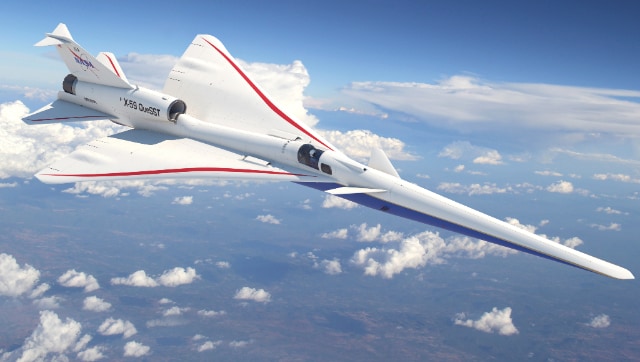
NASA’s experimental supersonic aircraft, the X-59 can travel between any two points on the Earth in about 2 hours. Also called the ‘Son of Concorde,’ NASA’s X59 can complete a normal 15 hour flight in 39 minutes. A 22 hour flight, could be cut down to 2 hours
Around two decades following Concorde’s final flight, the aviation industry is on the brink of a new era in ultrafast air travel. The X-59 ‘Son of Concorde,’ an experimental supersonic aircraft developed by NASA, is now gearing up for its maiden test flight, as reported by the New York Post.
Although smaller and slower than its predecessor, Concorde, the X-59 boasts a top speed of approximately 1,500 kilometres per hour. This advancement holds the promise of reducing the travel time from New York to London by an impressive 3 hours and 30 minutes.
Further exciting developments are also on the horizon. The Civil Aviation Authority of Britain recently published research suggesting that by 2033, a flight from London to Sydney, currently spanning 22 hours, could be cut down to an astonishing two hours.
Related Articles

Giant Asteroid that blindsided NASA, almost hit Earth

Chandrayaan 3: How ISRO, NASA & ESA have come together to ensure Indian Lunar Mission’s success
Notably, suborbital flights akin to those pioneered by Jeff Bezos’ Blue Origin and Richard Branson’s Virgin Galactic jet program are redefining the possibilities of air travel. Operating at an incredible speed of 3,500 miles per hour (equivalent to 5,632 kilometres per hour), these flights offer unparalleled time-saving opportunities. Imagine travelling from New York to Shanghai in a mere 39 minutes, a journey that currently takes 15 hours by conventional means. Similarly, a trip from New York to London, which usually could be completed in less than an hour.
The X-59 incorporates a groundbreaking feature known as ‘Quiet Supersonic Technology,’ aimed at mitigating the disruptive sonic boom typically produced when an aircraft breaks the sound barrier.
NASA explains that the X-59’s unique design prevents shockwaves from merging, resulting in a more subdued ‘sonic thump’ rather than the traditional loud sonic boom generated by other supersonic aircraft. This innovation represents a significant step forward in making supersonic travel more socially acceptable due to its reduced noise impact.
Stay connected with us on social media platform for instant update click here to join our Twitter, & Facebook
We are now on Telegram. Click here to join our channel (@TechiUpdate) and stay updated with the latest Technology headlines.
For all the latest Technology News Click Here
For the latest news and updates, follow us on Google News.
